Why Health and Fitness Companies Need To Automate their Processes


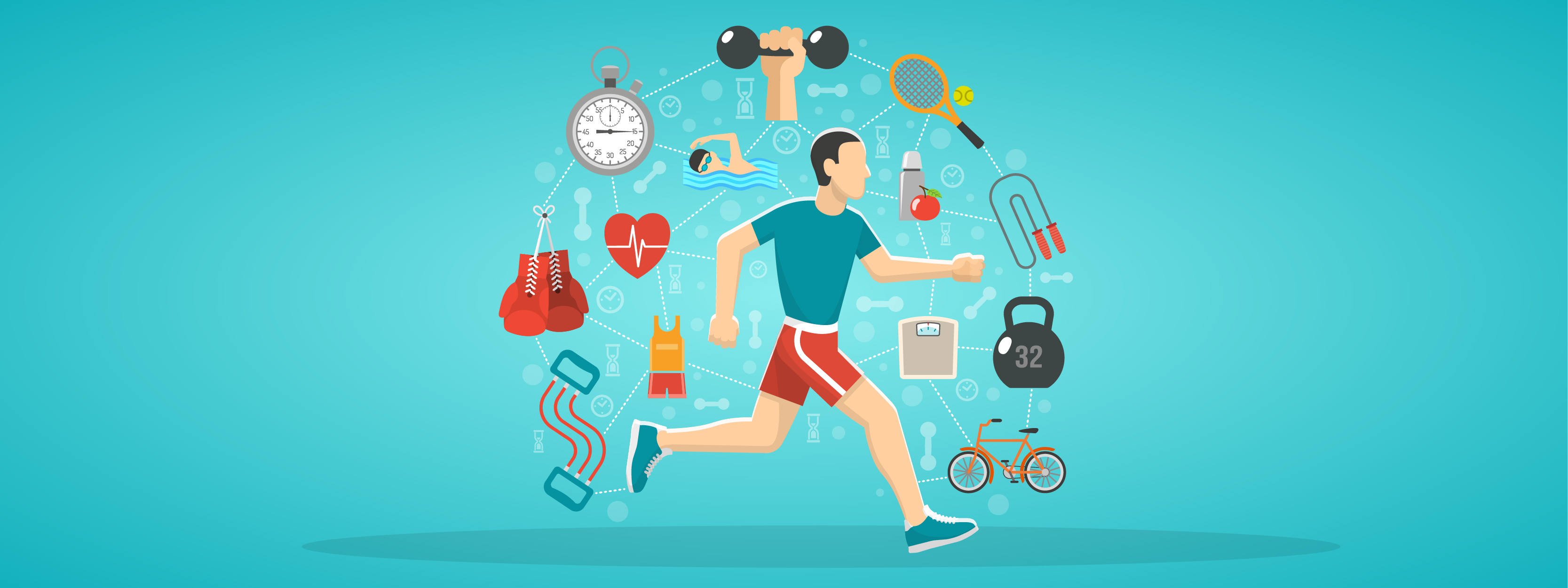
As consumers increasingly become somewhat complicated and sometimes unpredictable, businesses are also trying their best to keep up with their ever-evolving demands for survival.
But even as the billion-dollar health and fitness industry continues to register impressive growth year-on-year, a lot is obviously going on behind the scenes to sustain this growth.
In 2017, health and fitness clubs attracted more than 70 million consumers, according to the International Health, Racquet and SportsClub Association.
Health and fitness companies are now deploying newer, well thought-out, and customer-centric marketing tactics in an effort to attract new members as well as retain existing ones.
However, there’s a new crop of consumers that every business is keen on attracting. This is the younger generation commonly referred to as the Millennials and Generation Z.
These two demographics are switched on.
Due to their unique lifestyle, these two generations are also, in one way or another, dominating the fitness industry today.
They have also grown up with digitization. This means that they spend most of their time online, probably looking for budget-friendly gyms, streaming exercise classes, healthy recipes, or even shopping for wearables.
They are also used to experiencing the convenience brought on by automated technology in different industries, including transport, customer care, fashion, and so many others.
Their expectations continue to soar, which means they expect the same level of convenience, even in the health and fitness space.

Health and fitness companies, therefore, need to automate to keep their customers engaged. Automation allows them to make their health and fitness brand and services more convenient and customer-friendly.
The health and fitness industry has been reluctant to integrate automation, but the ones that have embraced it have seen its impact, not to mention the ROI after its adoption.
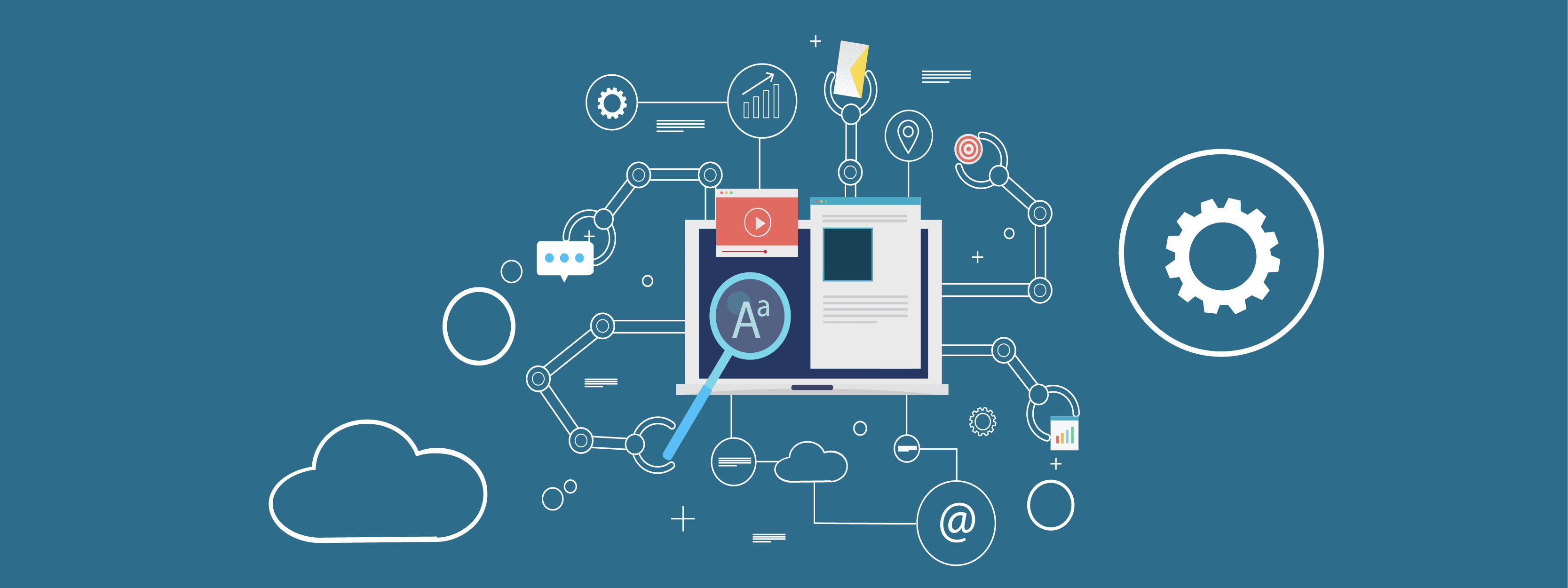
The International Society of Automation defines automation as “the creation and application of technology to monitor and control the production and delivery of products and services.”
It’s the automatic execution of tasks without interference. Automation gradually minimizes human interaction and reduces complicated tasks to a single instance. The click of a button sets a chain of events into motion towards the achievement of an objective.
With automation, human resource is made available for more crucial and engaging tasks. The result is greater efficiency, innovativeness, and improved job satisfaction.
Automated devices monitor steps which optimize cost and management of time. Problems are identified faster and mitigated immediately to ensure seamless operations.
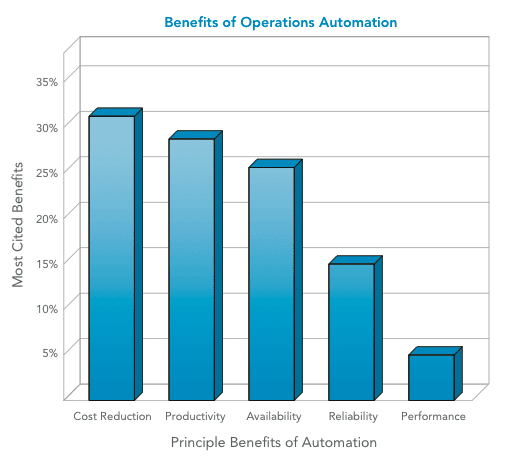
Image Source: HelpSystems
Being a part of the service industry, health and fitness companies need automation. It’s the only way they can allow their clients to access fitness on their terms. Automation in the health and fitness sector conveniently offers clients options that snugly fit into their busy schedules.
Today’s fitness buyer will most likely research your company before joining a weight loss or muscle gain program. They will read reviews and ask for recommendations, and if they like what they hear, they will ultimately join the club.
Once part of your clientele, they will post pictures of themselves working out, go online, and write reviews and recommendations all in praise of your company and the services you provide.
The opposite is also true. If they don’t like what they experience, well, you know what happens next, don’t you?
They will write negative reviews, and that’s the last thing you will see of them.
By automating, your fitness company can significantly generate potential leads, gain new memberships, retain members, and even get the all-important referrals from existing clients.
So, how does automating your fitness business help you remain competitive in the long run?
1. Lead Nurturing

Lead nurturing allows you to develop relationships with your clients at every stage of their buying journey. Marketing and communication efforts are focused on listening and providing what the customer needs.
Fifty percent of those who visit your site are not ready to buy. Interestingly, 80 percent will not necessarily turn into leads. However, with lead nurturing, you can generate over 50 percent more sales-ready leads at a low cost.
Those who visit your site are not always ready to buy from you. They are either carrying out research or considering their options. With lead nurturing, you can make these statistics work in your favor.
Lead nurturing also allows you to communicate with prospective club members frequently. It can be instrumental in helping them to choose your company when they finally decide to enroll.
It also helps you convert leads to customers, which is your main objective. Compared to non-nurtured leads, nurtured leads make 47 percent more purchases.
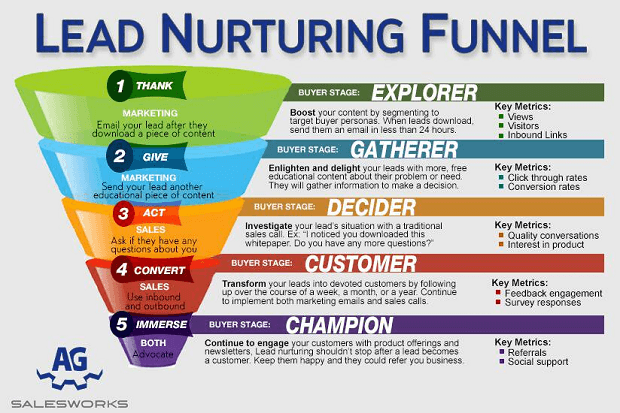
Image Source: OptinMonster
Lead nurturing helps you connect with prospective buyers immediately and demonstrate your expertise. It also allows you to understand their needs, identify their pain points, offer relevant information, and guide them in making the right decision.
With lead nurturing, you can correctly identify a prospect behavior and segment them depending on certain characteristics.
Automation sweetens this deal. It can become time-consuming and costly to send nurturing emails manually to all your prospective clients.
Sending repetitive emails each day can drive your customers away too. With automation, you can now send relevant emails to potential targeted clients at the right time.
Campaigns that connect with the needs of your consumers improve your conversions. For every $1 you spend you get a $44 return on investment.

Segment the leads for more personalization, and your sales team can concentrate on converting qualified leads nurtured through email automation. Personalized emails increase open rates by 14 percent and conversions by 10 percent. Some of the email automation workflows that work include:
Automation helps you move the prospects through a buying journey where 80 percent of the new members you acquire will be from the fifth contact. It helps you through critical touchpoints while freeing up time otherwise spent by employees on menial tasks.
2. Scheduling, Signing up, and Booking

It’s time to let your front desk manager work on other important tasks apart from receiving calls and recording messages. Automating online booking and scheduling allows your clients to book and schedule classes at their own convenience. It also offers them a good user experience.
Automated email confirmations and online sign-ups allow your clients to pay for their memberships without relying on your personnel. An online portal will allow (your) members to own their workout regime and have a great degree of control over it.
This means that they can manage their fitness regimes from the comfort of their homes or office. It also makes things easier, operation-wise that is, for your company due to the automatic and seamless information flow from the members to your team. The members get transparency and convenience, which leads to trust and loyalty.
An appointment scheduling tool is practical and provides efficient and profitable solutions. The scheduling process allows you to collect the client’s contacts. The automated tools have integrations that allow you to contact a member if they forgot to schedule and remind them that there is still time to book that class.
The scheduling tool can help you maximize your earnings since it reduces no-shows by reminding clients to book their sessions. You can also use online scheduling as a connection and engagement point with them since this is where they spend most of their time. Your website becomes a place to generate not only leads but also appointments with sales-ready clients.
A software like MindBody allows your members to create their profiles, add or drop fitness classes, upgrade membership levels, and easily update their billing information from the comfort of their home.
Your company also benefits from it that you can process payments securely, track success, schedule appointments, manage schedules, and automatically remind clients of meetings to avoid no shows.
The inbuilt features allow you to attract and engage your existing members.

Image Source: MindBody
3. Wearables

Wearables are electronic devices added to clothes or accessories worn by an individual to collect data. They have become so popular with the younger generation and the young at heart.
The wearables market has seen accelerated year-on-year growth and is estimated to reach over $150b by the year 2026.

Image Source: Smart Insights
However, most fitness specialists and wellness coaches have not embraced wearables because they believe their metrics do not add value. But a report from Indiana University showed that the wearables work when paired with wellness coaching.
Research shows that people in their 30s are likely to use wearables. This means that fitness professionals must find ways to integrate them into their service offering and use them to their advantage. This collaboration will improve their business while helping clients meet their goals.

Image Source: HubSpot
Wearables are changing some of healthcare’s biggest problems. Their use is helping fitness companies collect their client’s data and even hold them accountable.
Fitness companies are also using them to get accurate body measurements and, therefore, are able to offer custom and pocket-friendly services to their clients. They can also be used to acquire and retain clients while improving customer experience throughout a member’s fitness journey.
Wellness companies must consider the fact that people spend 57 percent of internet time on apps – an illustration of the value of incorporating wearable technology into your fitness business.

Image Source: SearchForce
Wearables are the future of fitness since:
4. Retention Strategy

You will spend five times more, attracting a new customer compared to retaining one. Retaining 5 percent of your clientele increases profits by 25 to 95 percent.
Based on these statistics, you should place more efforts on retaining the clients you already have. But since growth is also important to your business, you will still need to attract new customers.
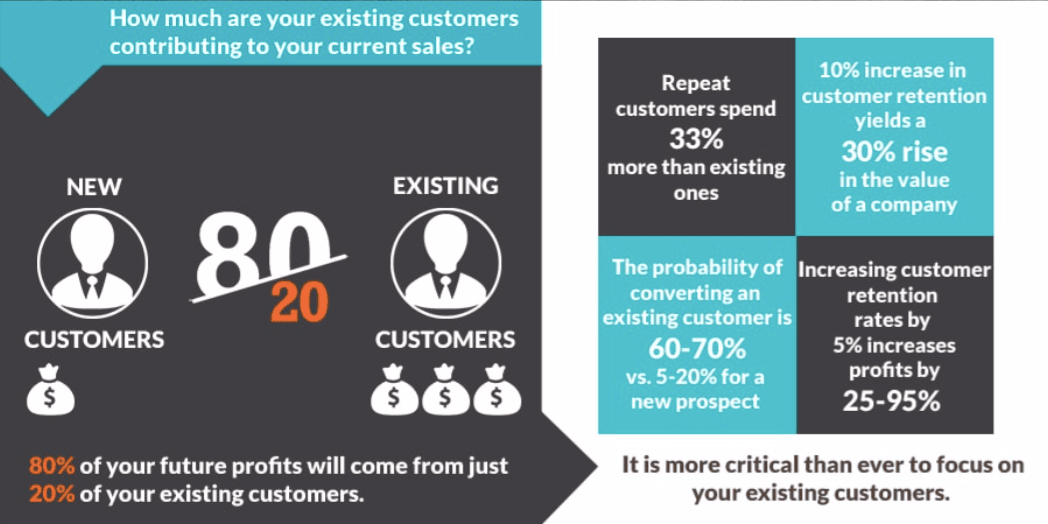
Image Source: AeroLeads
Automation is your ticket towards retaining customers. Segmentation enabled by automation allows you to send your customers targeted personalized messages. For example, you can send your members birthday cards or cheer them on and encourage them to reach their fitness goals.
Data collected will be great for giving away offers and coupons — for example, branded T-shirts or extra training sessions with a personal trainer. The system will flag out customers who haven’t checked in for a while so that your staff can reach out to them and invite them back.
5. Text Messaging

Text messaging is another great way to personalize messages for your members. Text message automation allows you to segment members depending on their stage in the buying journey.
For example, sending an automated text message offering free personal training once a member completes a month of training. Every time one of your members completes their one-month session, they receive the text offering free personal training.
Text messages have a great advantage even over email marketing since they have a 95 percent open rate. However, to ensure a high open-rate, use a sender ID so that your brand is the first thing the member sees on receiving the message.

Image Source: Essendex
Messages have an advantage that 91 percent of people who own mobile phones are text ready. They are also delivered instantly with a 98 percent read rate. The messages are also short and can be read in seconds.
When choosing a text messaging tool, choose one that can easily integrate with your point of sale system and other current systems you are using. It will make automation easier.
6. Easy Check-in Process
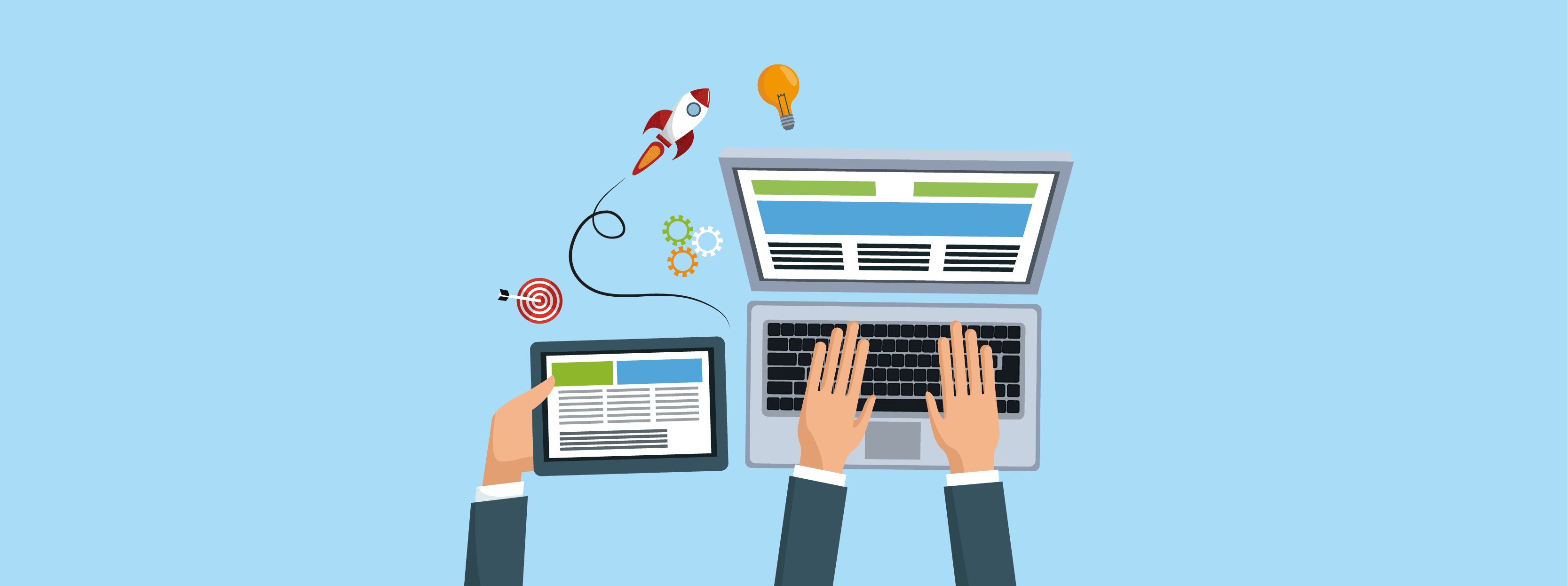
In today’s automated gym, there is no need for a front office admin to be present at all times. Members can sign up or check in to the gym using a tablet placed right at the entrance.
The tablet integrates with a card reader that requires no extra programming. The members can use their IDs since the tablet has an ID scanner or a pin entry using the touch screen. You can also integrate biometrics so that members access your gym via fingerprints.
7. Upselling
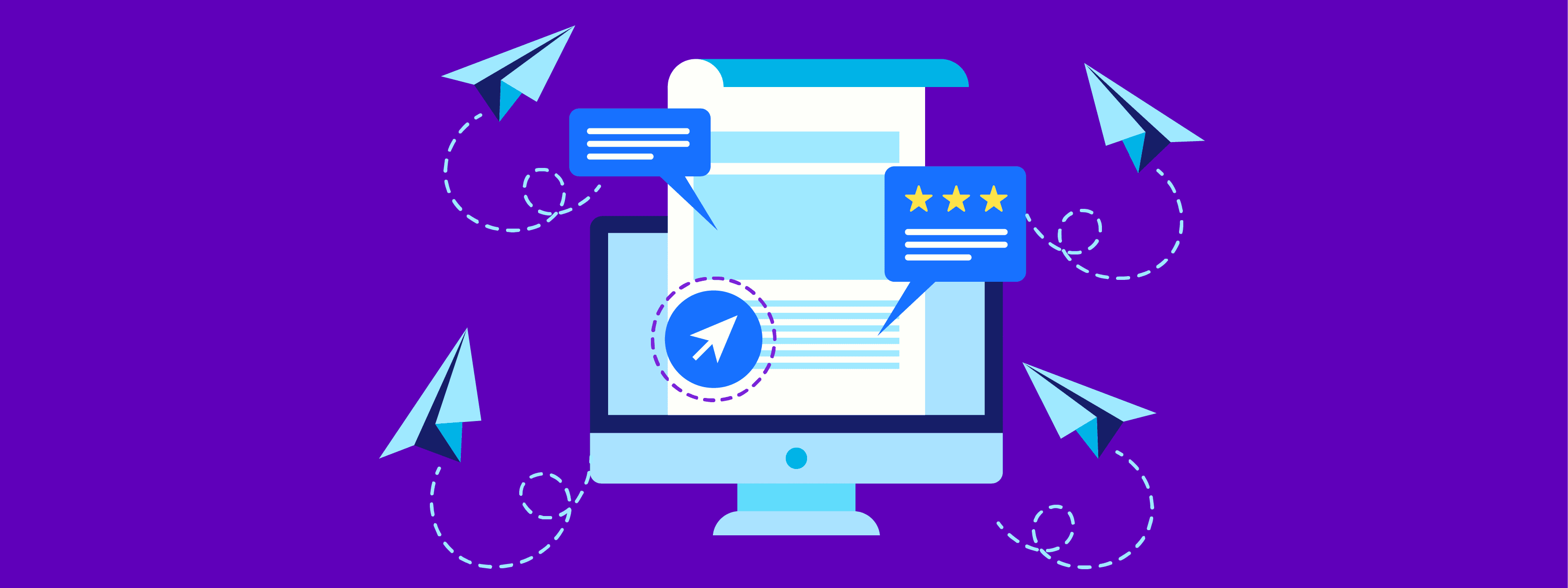
If you offer retail products, you can use email to sell to your existing customers. For example, send Yoga members offers to buy mats at discounted prices on the website. Offer them a code to access the discount.
The process will require the use of the segmented list you created when nurturing leads. Keep an eye on what products the members are buying plus the click-through rates, then use this data to fine-tune your automation strategies.
8. Social Media Automation

Social media is important for fitness businesses. Posting frequently is necessary across all platforms where your members are. However, it may be difficult to stay on top of all the social media platforms.
Using tools like Buffer and Hootsuite helps you stay on top of your social media game. These tools help you prepare content and either post immediately or schedule the posts on all your social media accounts for a future date and time.
Scheduling posts on Hootsuite, for instance, is simple since you can shorten links and tag other pages and profiles. You can also add images and relevant hashtags as well.

Image Source: Creative PR
9. Automate Accounts and Payments

When you automate your monthly invoices and accounts, you ensure that your clients can access and pay for stand-alone programs with ease. This process also allows you to assign a trainer to specific clients based on their choice of fitness class.
Integrating QuickBooks with a great CRM allows you to manage your money efficiently, create financial reports, and generate invoices and receipts. You can view each customer’s information, track expenses, and gain insights for better future forecasts.
10. Use SyncApps to integrate your web tools

The tools mentioned above are numerous and may even confuse you. SyncApps is an online automation tool that integrates Customer Relationship Management tools with your e-commerce tools, marketing automation, and support software for a seamless business operation.
Your business applications can talk to each other seamlessly with SyncApps from Cazoomi. You can automate your bookings, appointments, and services for your health and fitness company. You can also track your customer touch points seamlessly.
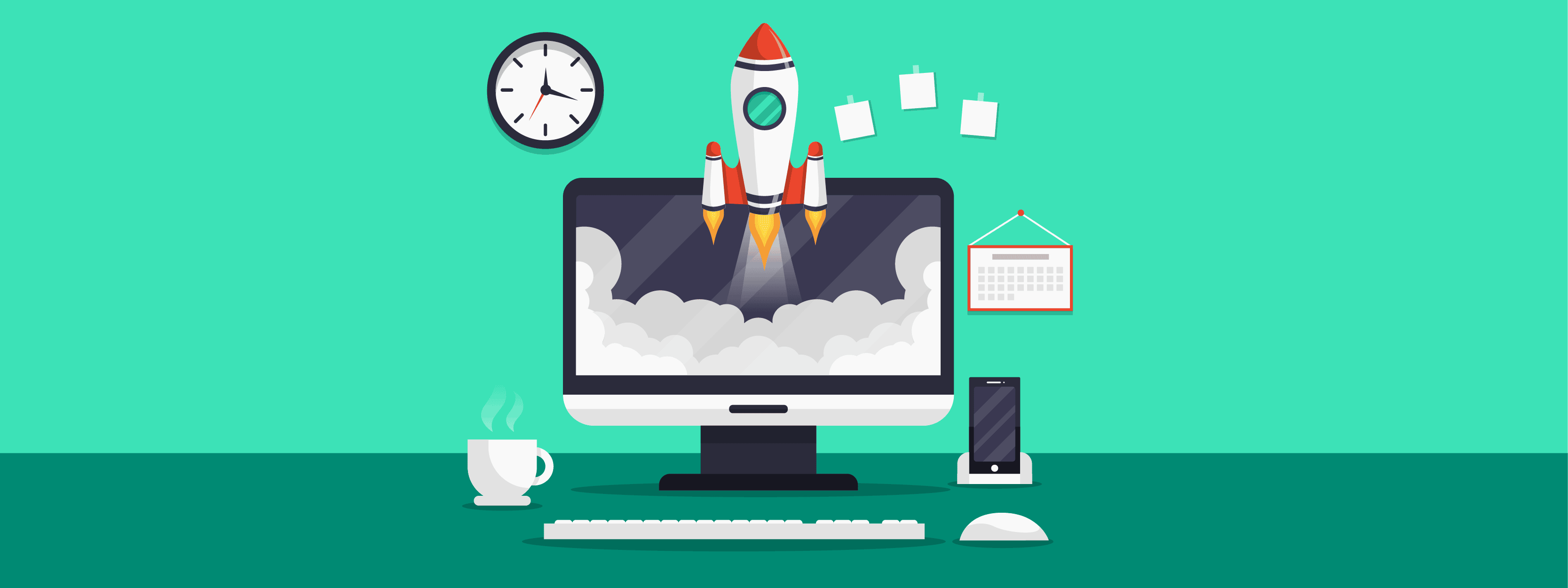
1. You Save Time
As a health and fitness company owner, you must wear many hats, especially if you are just starting out. You are the administrator, the trainer, the marketer, the social media executive, and so much more. You may not be able to handle each problem and responsibility that comes your way efficiently.
With automation, you can schedule social media posts, have tools that allow members to access your facilities without needing a front office manager, have an automated app that takes care of payment so that members are not lining up to pay before getting into class, and so much more.
Automation can save you a great deal of time and resources. With more time on your hands, you can train your clients and handle other pressing business processes instead of menial tasks. It will also enable you to run a seamless and efficient club while your clients enjoy the convenience and personal attention.
It can be hard to personally take care of every client who walks in if you are busy trying to balance your books over and above other day-to-day tasks. Automation becomes your assistant, handling all the mundane and repetitive tasks while you handle business.
Eighty-eight percent of marketers say that automation reduces time spent on repetitive tasks, hence freeing up valuable time to strategize and concentrate on customer interaction. You can focus on personalizing one-on-one coaching for every client without having to hire additional staff.

Image Source: Forrester
2. Drive business growth
When simple tasks like invoicing, sending emails, sending text messages, and lead nurturing are automated, you have more time to deliver what your members paid you for – fitness training. You also have time to market your fitness club and use the collected data to strategize on the best way to run your business.
3. Engage Clients and Personalize Their Experience
No one wants to do business with someone who treats them badly. Customer care has become the current battlefield for business owners. Everyone is working hard to ensure that they provide the best for their customers.
Clients also expect top-notch customer experiences and by the year 2020, 86 percent of them will be paying more for better customer experience.
Giving customers the best experience is key to retaining clients, providing satisfaction, and increasing revenue for your business.

Image Source: CJG Digital Marketing
Automation ensures you don’t forget some of the things on your to-do list. Scheduled auto messages, auto-responder emails, social media automation, and so many automated processes ensure you handle all important tasks on time.
Sending your customer’s automated email campaigns ensures they are engaged and that they work hard to maintain their workouts, eat healthily, and watch their health. Use great content on your landing pages, offer how-to videos, motivational messages for those struggling, easy do it yourself pro-tips, and interesting content that kick-starts and helps them achieve their fitness goals.
4. Reduce human error
Without automation, your employees have to input data into the systems manually of which administrative errors are likely to happen. Automation takes the manual task required to be performed by a professional and uses software to create repeatable instructions and processes to either perform part of the work or all of it if required.
It improves efficiency by taking care of basic tasks so that you can focus on more strategic and critical functions. It ensures accuracy by removing human error.

Automation is more than keeping with the times for health and fitness companies. It’s about aiding the sales process from start to finish, customizing messages, boosting lead generation, and ensuring customers have an enjoyable experience.
Maximize the benefits of automation by reviewing your automation strategy. Find out what messages are receiving great response rates and which ones are not.
Adjust your strategies to ensure that the customer goes through the purchase journey without dropping off at some point. Measure your return on investment to ensure you are getting value for your money.
Automation is essential for the health and fitness industry because it helps companies connect with their customers.
Automation gives you the freedom to work on growing your business and meeting your customer needs. With automation, the company can maximize operational efficiency and elevate fitness experiences for their customers.